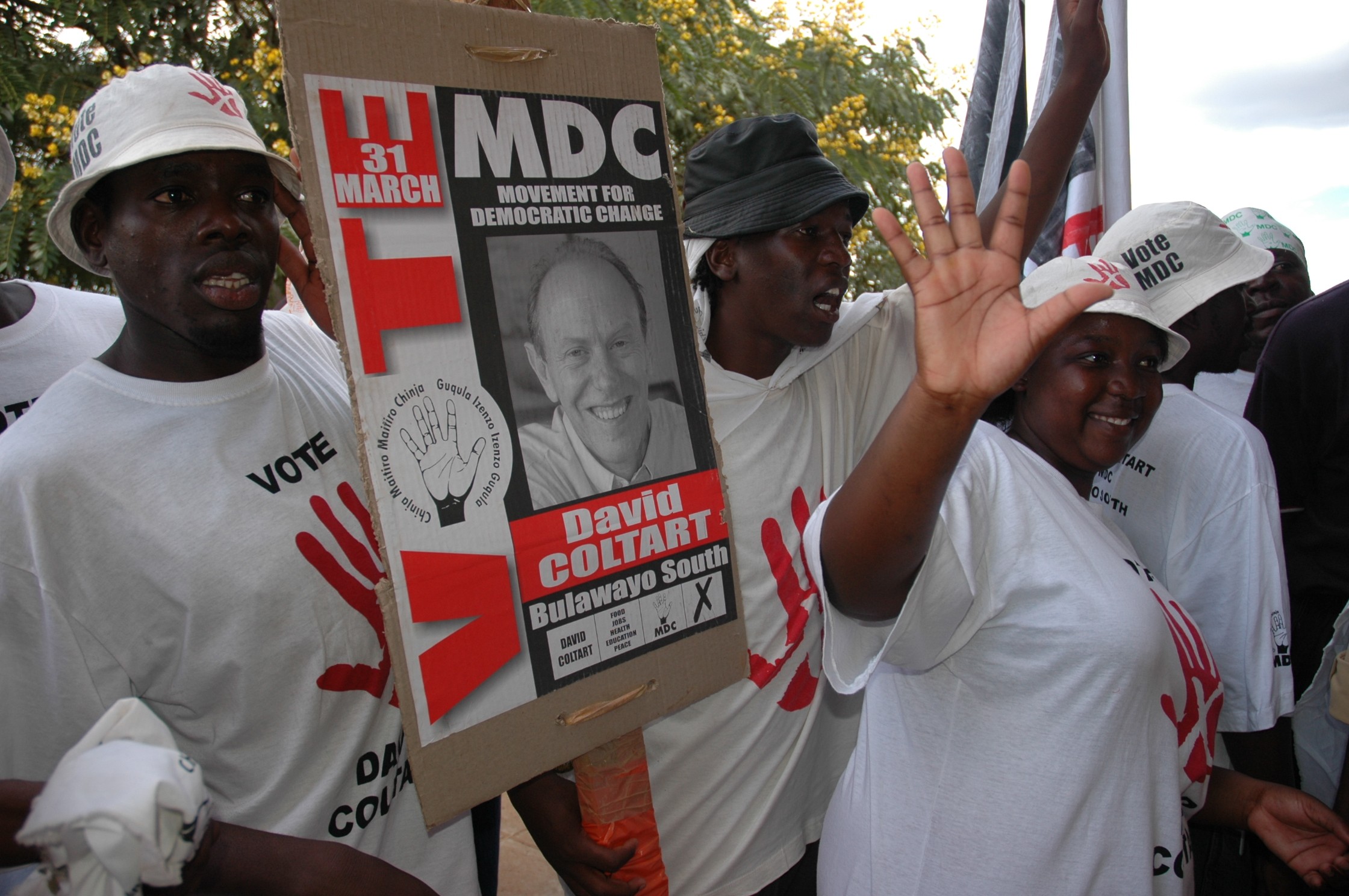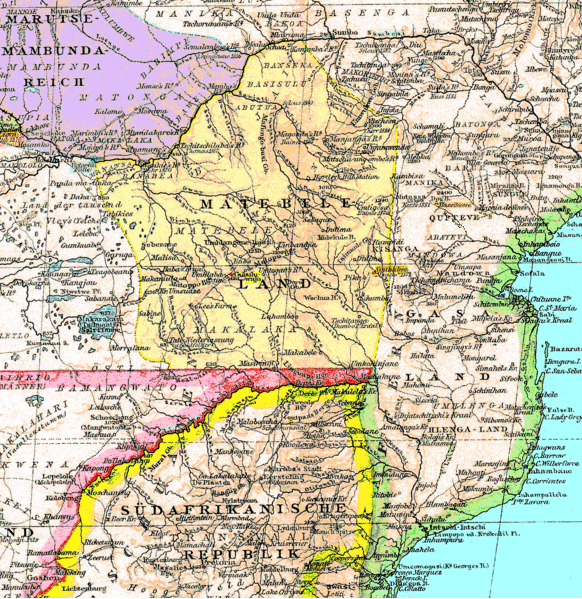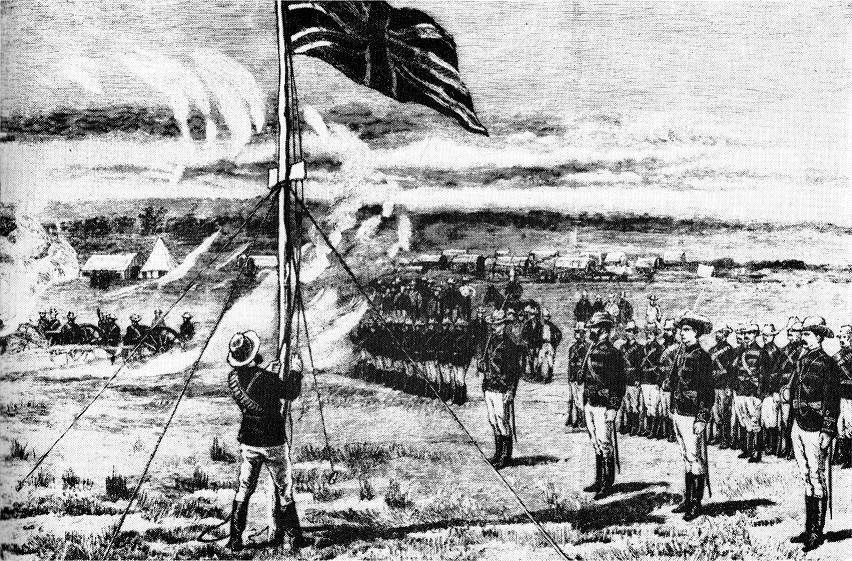|
Bulawayo
Bulawayo (, ; ) is the second largest city in Zimbabwe, and the largest city in the country's Matabeleland region. The city's population is disputed; the 2022 census listed it at 665,940, while the Bulawayo City Council claimed it to be about 1.2 million. Bulawayo covers an area of in the western part of the country, along the Matsheumhlope River. Along with the capital Harare, Bulawayo is one of two cities in Zimbabwe that are also Provinces of Zimbabwe, provinces. Bulawayo was founded by a group led by Gundwane Ndiweni around 1840 as the kraal of Mzilikazi, the Ndebele king and was known as Gibixhegu. His son, Lobengula, succeeded him in the 1860s, and changed the name to koBulawayo and ruled from Bulawayo until 1893, when the settlement was captured by British South Africa Company soldiers during the First Matabele War. That year, the first white settlers arrived and rebuilt the town. The town was besieged by Ndebele warriors during the Second Matabele War. Bulawayo attaine ... [...More Info...] [...Related Items...] OR: [Wikipedia] [Google] [Baidu] |
National Railways Of Zimbabwe
The National Railways of Zimbabwe (NRZ), formerly Rhodesia Railways (RR), is a Bulawayo headquartered state-owned enterprise that operates the country's national railway system. It was established in 1893 and is governed by an Act of Parliament. It has a commercial-administrative center in Harare and a supply center in Gweru. The Zimbabwean railway system was largely constructed during the 20th century. History NRZ's history begins with the creation of the Bechuanaland Railway Company on May 24, 1893. It was renamed Rhodesia Railways Ltd (RR) on July 1, 1899.Günter Krause. ''Eisenbahnmuseum Livingstone (Sambia) und die Zambesi Saw Mills Railways''. 2 Ed. 2018. At the same time, on April 13, 1897, the Mashonaland Railway Company (MRC) was founded. On March 1, 1905 the small Ayrshire Gold Mine & Lomangundi Railway Company — which had been founded in 1900 — merged with MRC. A similar event would occur with the Beira & Mashonaland Railway (also founded in 1900), which me ... [...More Info...] [...Related Items...] OR: [Wikipedia] [Google] [Baidu] |
David Coltart
David Coltart (born 4 October 1957) is a Zimbabwean lawyer, Christian leader and politician. He was a founding member of the Movement for Democratic Change when it was established in 1999 and its founding secretary for legal affairs. Coultart was the Member of Parliament for Bulawayo South in the House of Assembly from 2000 to 2008, and he was elected to the Senate in 2008. He was the Minister for Education, Sport, Arts and Culture from February 2009 until August 2013. Coultart is a top official of the Citizens Coalition for Change political party which was formed in 2022. He has served as the Mayor of Bulawayo since September 2023. Early life Coltart was born in Gwelo, Midlands Province, in the former Federation of Rhodesia and Nyasaland. He was born an only child to a Scottish bank manager father and a South African nurse mother. His mother was the descendant of British settlers who settled in the Eastern Cape of South Africa in 1820. His Scottish grandfather was Deputy ... [...More Info...] [...Related Items...] OR: [Wikipedia] [Google] [Baidu] |
Second Matabele War
The Second Matabele War, also known as the First Chimurenga, was fought between 1896 and 1897 in the region that later became Southern Rhodesia (now Zimbabwe). The conflict was initially between the British South Africa Company and the Matabele people, later expanding to include the Shona people in the rest of Southern Rhodesia. In March 1896, the Matabele revolted against the authority of the British South Africa Company. The ''Mlimo'' (or ''M'limo'', or ''Umlimo'') the Matabele spiritual leader, was credited with fomenting much of the anger that led to this confrontation. He convinced the Matabele and the Shona that the settlers (almost 4,000-strong by then) were responsible for the drought, locust plagues and the cattle disease rinderpest ravaging the country at the time. The Mlimo's call to battle was well-timed. Only a few months earlier, the British South Africa Company's Administrator General for Matabeleland, Leander Starr Jameson, had sent most of his troops and ... [...More Info...] [...Related Items...] OR: [Wikipedia] [Google] [Baidu] |
Mayor Of Bulawayo
The Executive Mayor of Bulawayo is the executive of the government of Bulawayo, Zimbabwe. The Mayor is a member of the Bulawayo City Council, and is assisted by a deputy mayor. The Mayor uses the style "His Worship". The current mayor is David Coltart since 11 September 2023. History Bulawayo's first mayor, Isidore Hirschler, took office on 25 November 1897. In 1981, following Zimbabwe's independence from the United Kingdom, Bulawayo's first black mayor, Naison Ndlovu, took office. List of mayors The following is a list of past mayors of Bulawayo. {, class="wikitable sortable" ! Mayor ! Term start ! Term end ! class="unsortable" , ! style="border-left-style:hidden;padding:0.1em 0em" , Party !Ref , - , , data-sort-value="1875" , 25 November 1897 , data-sort-value="1876" , 2 August 1898 , bgcolor="" , , , , - , , data-sort-value="1784" , 2 August 1898 , 1899 , bgcolor="" , , , , - , , 1899 , 1900 , bgcolor="" , , , , - , , 27 September 1900 , 1901 , ... [...More Info...] [...Related Items...] OR: [Wikipedia] [Google] [Baidu] |
Zimbabwe
file:Zimbabwe, relief map.jpg, upright=1.22, Zimbabwe, relief map Zimbabwe, officially the Republic of Zimbabwe, is a landlocked country in Southeast Africa, between the Zambezi and Limpopo Rivers, bordered by South Africa to the south, Botswana to the southwest, Zambia to the north, and Mozambique to the east. The capital and largest city is Harare, and the second largest is Bulawayo. A country of roughly 16.6 million people as per 2024 census, Zimbabwe's largest ethnic group are the Shona people, Shona, who make up 80% of the population, followed by the Northern Ndebele people, Northern Ndebele and other #Demographics, smaller minorities. Zimbabwe has 16 official languages, with English, Shona language, Shona, and Northern Ndebele language, Ndebele the most common. Zimbabwe is a member of the United Nations, the Southern African Development Community, the African Union, and the Common Market for Eastern and Southern Africa. The region was long inhabited by the San people, ... [...More Info...] [...Related Items...] OR: [Wikipedia] [Google] [Baidu] |
First Matabele War
The First Matabele War was fought between 1893 and 1894 in modern-day Zimbabwe. It pitted the British South Africa Company against the Ndebele (Matabele) Kingdom. Lobengula, king of the Ndebele, had tried to avoid outright war with the company's pioneers because he and his advisors were mindful of the destructive power of European-produced weapons on traditional Matabele impis (units of warriors) attacking in massed ranks. Lobengula reportedly could muster 80,000 spearmen and 20,000 riflemen, armed with Martini-Henry rifles, which were modern arms at that time. However, poor training may have resulted in the weapons not being used effectively. The British South Africa Company had no more than 750 troops in the British South Africa Company's Police, with an undetermined number of possible colonial volunteers and an additional 700 Tswana (Bechuana) allies. Cecil Rhodes, who was Prime Minister of the Cape Colony, and Leander Starr Jameson, the Administrator of Mashonaland, ... [...More Info...] [...Related Items...] OR: [Wikipedia] [Google] [Baidu] |
Zimbabwe School Of Mines
The 'Zimbabwe School of Mines'' is an institution whose mandate is pivotal to the socio-economic development of Zimbabwe. From its inception in 1926 the school has produced competent mining practitioners who are in demand in the SADC region and internationally. The school is located in Killarney, Bulawayo Bulawayo (, ; ) is the second largest city in Zimbabwe, and the largest city in the country's Matabeleland region. The city's population is disputed; the 2022 census listed it at 665,940, while the Bulawayo City Council claimed it to be about .... Zimbabwe School of mines mainly offers qualification in National Diploma and Higher National Diploma in Mining, Mine Geology, Mine Survey, Mining Mineral Processing & Extractive Metallurgy and Metallurgical Assaying. The curriculum constantly is revised and updated with help from mining companies in Zimbabwe and Southern Africa. History The Zimbabwe School of Mines was formed by a Presidential Charter in 1994 but had been in ... [...More Info...] [...Related Items...] OR: [Wikipedia] [Google] [Baidu] |
Natural History Museum Of Zimbabwe
The Natural History Museum of Zimbabwe is located in Bulawayo, Zimbabwe, on Leopold Takawira Avenue. Designed by architect James Whalley, the museum officially opened in 1964, the museum contains exhibits illustrating the history, mineral wealth and wildlife of Zimbabwe, including the second largest mounted elephant in the world. It is one of the five national museums nationwide and the only natural history museum in Zimbabwe. The museum has nine public display galleries, a lecture hall with a seating capacity of 120 people, a cafeteria, and eight research departments with substantial study collections and ongoing research in the following disciplines: Arachnology and invertebrates, Entomology, Ornithology, Mammology, Herpetology, Ichthyology, Paleontology and Geology and Archaeology. History 1901 - Cecil Rhodes visited Bulawayo and received a request from the Rhodesia Scientific Board to build a museum to house their growing collection of minerals. 1 January 1902 - The ... [...More Info...] [...Related Items...] OR: [Wikipedia] [Google] [Baidu] |
Northern Ndebele People
The Northern Ndebele people (; ; ) are a Nguni ethnic group native to Southern Africa. Significant populations of native speakers of the Northern Ndebele language (siNdebele) are found in Zimbabwe and as amaZulu in South Africa. They differ from Southern Ndebele people who speak isiNdebele of KwaNdebele. Regional classification The Northern Ndebele language spoken by the Ndebele people of Zimbabwe is generally the same as the isiZulu language spoken by the Zulu people of South Africa with a few pronunciation and word meaning differences. Northern Ndebele spoken in Zimbabwe and Southern Ndebele (or Transvaal Ndebele) spoken in South Africa are separate but related languages with some degree of mutual intelligibility, although the former is more closely related to Zulu. Southern Ndebele, while maintaining its Nguni roots, has been influenced by the Sotho languages. Etymology The Northern Ndebele, specifically the Khumalo (amaNtungwa) people under Mzilikazi, were origi ... [...More Info...] [...Related Items...] OR: [Wikipedia] [Google] [Baidu] |
Matabeleland
Matabeleland is a region located in southwestern Zimbabwe that is divided into three provinces: Matabeleland North, Bulawayo, and Matabeleland South. These provinces are in the west and south-west of Zimbabwe, between the Limpopo and Zambezi rivers and are further separated from Midlands by the Shangani River in central Zimbabwe. The region is named after its inhabitants, the Ndebele people who were called "Amatabele"(people with long shields – Mzilikazi 's group of people who were escaping the Mfecani wars). Other ethnic groups who inhabit parts of Matabeleland include the Tonga, Bakalanga, Venda, Nambya, Khoisan, Xhosa, Sotho, Tswana, and Tsonga. The capital and largest city is Bulawayo, other notable towns are Plumtree, Victoria Falls, Beitbridge, Lupane, Esigodini, Hwange Gwanda and Maphisa. The land is fertile but semi arid. This area has coal and gold deposits. Industries include gold and other mineral mines, and engineering. There has been a decli ... [...More Info...] [...Related Items...] OR: [Wikipedia] [Google] [Baidu] |
Harare
Harare ( ), formerly Salisbury, is the Capital city, capital and largest city of Zimbabwe. The city proper has an area of , a population of 1,849,600 as of the 2022 Zimbabwe census, 2022 census and an estimated 2,487,209 people in its metropolitan province. The city is situated in north-eastern Zimbabwe in the country's Mashonaland region. Harare Metropolitan Province incorporates the city and the municipalities of Chitungwiza, Epworth, Zimbabwe, Epworth and Ruwa. The city sits on a plateau at an elevation of above sea level, and its climate falls into the subtropical highland category. The city was founded in 1890 by the Pioneer Column, a small military force of the British South Africa Company, and was named Southern Rhodesia, Fort Salisbury after the British Prime Minister Robert Gascoyne-Cecil, 3rd Marquess of Salisbury, Lord Salisbury. Company Company rule in Rhodesia, administrators Demarcation line, demarcated the city and ran it until Southern Rhodesia achieved respo ... [...More Info...] [...Related Items...] OR: [Wikipedia] [Google] [Baidu] |






